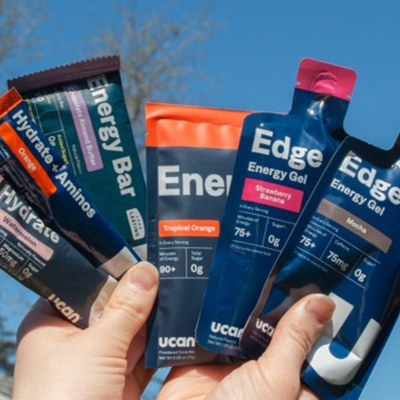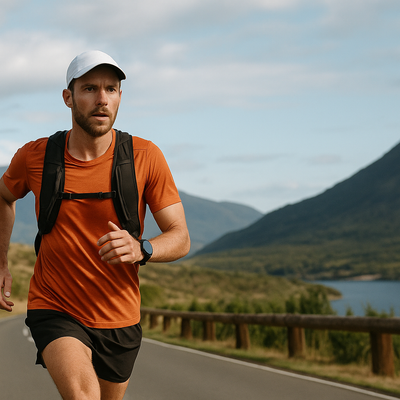In the world of endurance sports, nutrition plays as critical a role as training. For years, athletes have relied on sugar-heavy diets and sports nutrition products to fuel long runs, rides, and races. But a growing body of research — and anecdotal experience — is pushing endurance athletes to rethink how they fuel, especially when it comes to sugar.
For endurance athletes seeking consistent energy, fewer crashes, and better gut comfort, low-sugar diets can provide a powerful performance edge. With the rise of smarter carbohydrate solutions like UCAN’s LIVSTEADY™, the future of endurance fueling is no longer dependent on sugar.
The Problem with Sugar for Endurance Athletes
Many athletes assume sugar is a necessary evil when it comes to performance. After all, it’s fast fuel. But fast isn’t always better — especially when it leads to equally fast crashes.
1. Energy Spikes and Crashes
Consuming high-glycemic carbohydrates (like gels, chews, and sugary drinks) spikes blood sugar quickly, which triggers a surge in insulin. That might give you a burst of energy, but it’s usually followed by a steep crash that leaves you sluggish, foggy, and craving more sugar — a cycle that can wreak havoc during a long workout or race.
“When you take in a quick hit of sugar, you get that initial energy boost,” says Dr. Stacy Sims, exercise physiologist and nutrition scientist. “But the crash afterward is what leads to fatigue and the need to constantly refuel.”
— TrainingPeaks
2. Gastrointestinal Distress
Simple sugars can ferment in the gut, leading to bloating, cramping, or nausea — especially during high-intensity efforts when digestion slows down. The more sugar you consume, the higher the risk of mid-race gut issues.
3. Metabolic Inflexibility
Over-reliance on sugar limits your body’s ability to tap into fat for fuel — a crucial energy source during long-duration events. Sugar-centric diets condition your metabolism to depend on frequent external carbohydrate hits, rather than optimizing your own internal stores.
Why Low-Sugar Diets Are Gaining Traction
A low-sugar diet doesn’t mean eliminating carbs. Instead, it means being smarter about the type of carbs you consume — favoring slow-burning, stable fuel sources that don’t spike blood sugar or cause crashes.
Key Benefits for Endurance Athletes:
-
Steady Energy: Slow-release carbs maintain blood glucose levels and reduce bonking.
-
Improved Fat Oxidation: A low-sugar diet encourages the body to burn fat more efficiently, supporting longer endurance efforts.
-
Reduced Inflammation: High sugar intake has been linked to chronic inflammation — something no athlete wants during recovery.
-
Better Gut Comfort: Less sugar means fewer digestive issues, especially during hot or high-intensity training.
“A reduced sugar intake can not only improve metabolic health, but it can improve training adaptations over time.”
— TrainRight.com
What to Eat Instead: Smarter Fueling Strategies
Endurance athletes need carbohydrates — but not all carbs are created equal. Transitioning to a low-sugar diet means choosing nutrient-dense, low-glycemic foods and supplements that provide energy without a spike-and-crash effect.
Great Choices Include:
-
Sweet potatoes, oats, quinoa, and legumes
-
Fruits like berries and apples (lower glycemic impact)
-
Healthy fats (avocados, olive oil, nuts)
-
Protein-rich foods to support recovery
For in-training fueling, low-sugar, slow-release carbohydrates like UCAN’s LIVSTEADY™ provide consistent energy with no crash.
UCAN’s Approach: Performance Without the Sugar
UCAN was born from the need for a better way to fuel — particularly for people who need stable blood sugar. The brand’s proprietary carbohydrate, LIVSTEADY™, is a slow-burning energy source that delivers steady glucose without the spike.
Why LIVSTEADY™ Is Different
-
Maintains blood sugar levels for 75+ minutes
-
No added sugar or stimulants
-
Easy on the stomach
-
Supports fat oxidation and metabolic efficiency
Whether you prefer UCAN Edge Gels or UCAN Energy Powders, both deliver endurance-focused performance with zero sugar, built around LIVSTEADY’s consistent release.
Featured Products:
-
UCAN Edge Gels: Convenient, on-the-go fueling with no sugar. Available in fruit and indulgent caffeinated flavors.
-
UCAN Energy Powders: Mix with water for pre-workout or intra-training support — great for long runs or rides.
How to Train Your Body to Adapt to Low-Sugar Fueling
Switching from sugar-heavy to low-sugar fueling is a process — but it’s worth the transition.
What to Expect:
-
Week 1–2: You may feel a dip in performance as your body adjusts to metabolizing fat and slow-release carbs more effectively.
-
Week 3–4: Energy levels stabilize. Cravings drop. Workouts feel smoother and more sustained.
-
Long-Term: Enhanced endurance, improved fat-burning, and less dependency on frequent fueling.
"Low-sugar doesn't mean low-energy. It means re-training your body to be more metabolically efficient — and that can lead to major gains in endurance performance."
— The Feed
Frequently Asked Questions (FAQ)
Q: Do I need any sugar during long events?
A: Some ultra-endurance athletes choose to include small amounts of sugar strategically. However, with slow-release carbs like LIVSTEADY, many find they can perform longer without needing sugary backups.
Q: How long does it take to adapt to a low-sugar approach?
A: Most athletes notice a shift within 2–4 weeks. Your body needs time to recalibrate its fuel sources and boost fat adaptation.
Q: Will I feel slower or weaker during the switch?
A: Possibly, in the first week or two — especially if your body is accustomed to sugar spikes. But once adapted, most athletes report better sustained performance.
Q: What makes UCAN’s LIVSTEADY better than sugar?
A: LIVSTEADY is a complex, non-GMO carbohydrate that breaks down slowly, giving you a consistent energy curve — not a spike and crash. It’s also easy on the gut and designed specifically for endurance athletes.
Conclusion: Rethinking the Role of Sugar in Performance
Low-sugar diets are no longer fringe in the endurance world — they’re fast becoming the go-to strategy for serious athletes looking to optimize performance, health, and recovery.
By shifting away from high-sugar fueling and toward smarter, steadier energy sources like UCAN’s LIVSTEADY™, you can unlock new levels of endurance and consistency.
Say goodbye to sugar crashes. Say hello to lasting energy — powered by better fuel.
Citations & References
-
Sims, S. (2021). The Effects of Taking Sugar Out of Your Diet. TrainingPeaks. https://www.trainingpeaks.com/blog/the-effects-of-taking-sugar-out-of-your-diet/
-
The Feed. (2023). Low Sugar for Endurance Athletes. https://thefeed.com/insider/low-sugar-for-endurance-athletes
-
Carmichael Training Systems. (2023). Cutting Sugar Without Undercutting Performance. TrainRight. https://trainright.com/cutting-sugar-without-undercutting-performance/
-
Clif Bar. (2023). The Role of Sugar in an Athlete’s Diet. https://www.clifbar.com/stories/the-role-of-sugar-in-an-athletes-diet
-
UCAN. (2024). What is LIVSTEADY™? https://ucan.co/pages/livsteady







